36+ Sample Demand Letters
-
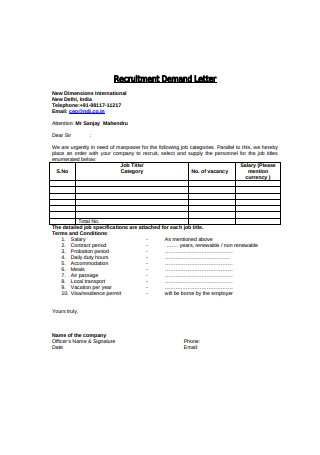
Recruitment Demand Letter
download now -

Demand Letter Format
download now -

Basic Demand Letter
download now -

Demand Letter Example
download now -

Ten Day Demand Letter
download now -
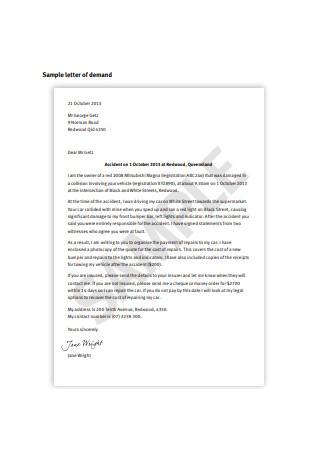
Sample Letter of Demand
download now -
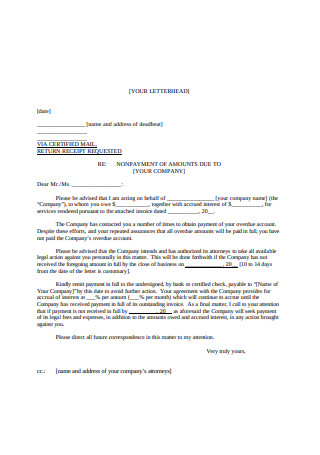
Demand Letter Sample
download now -

Standard Demand Letter
download now -

Sample Demand Letter Format
download now -

Application form for Bank Loan Demand Letter
download now -

Seven Day Demand Letter
download now -

Credit Balance Demand Letter Claim Adjustment Request
download now -
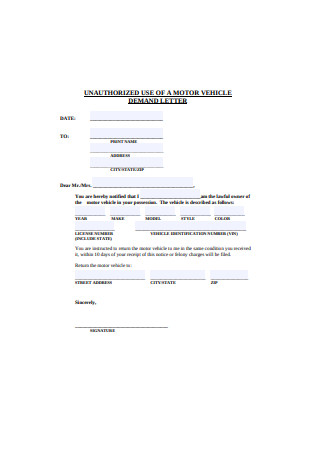
Motor Vehicle Demand Letter
download now -

Sample Demand Letter Example
download now -

10 Day Demand Letter Sample
download now -

Basic Demand Letter Example
download now -

Letter of Demand
download now -

Sample First Letter of Demand
download now -

Basic Demand Letter Format
download now -
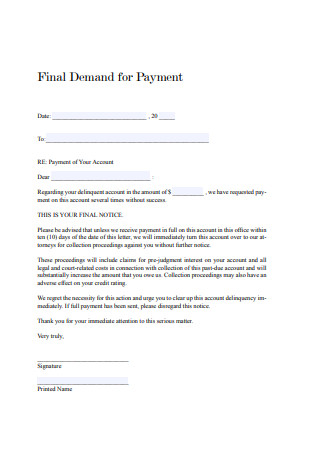
Final Demand Letter for Payment
download now -

Sample Demand Letter for Payment
download now -

Simple Demand Letter Example
download now -
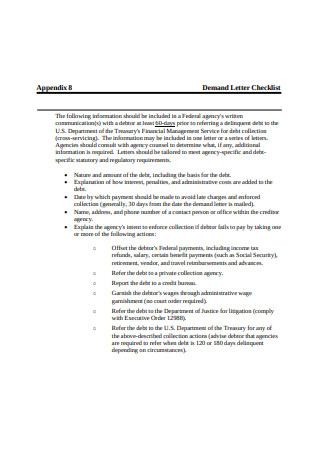
Demand Letter Checklist
download now -

15- Day Demand Letter for Payment
download now -

Demand Letter to Dealer
download now -

Printable Demand Letter
download now -

Demand Letter To Counsel
download now -

Basic Demand Letter Sample
download now -

Printable Demand Letter Format
download now -
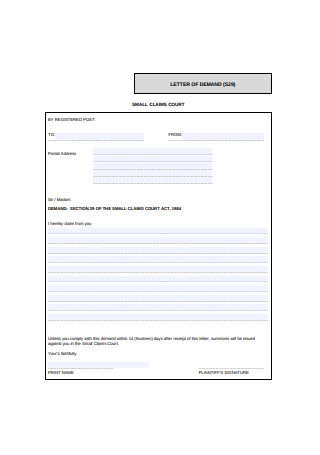
Letter of Demand Example
download now -
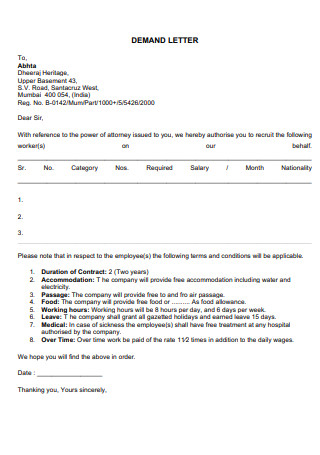
Sample Demand Letter
download now -

Merchant Demand Letter
download now -

Reclamation Demand Letter Form
download now -

Sample Demand Letter Outline
download now -

First Demand Payment Letter
download now -

Payoff Demand Letter
download now -
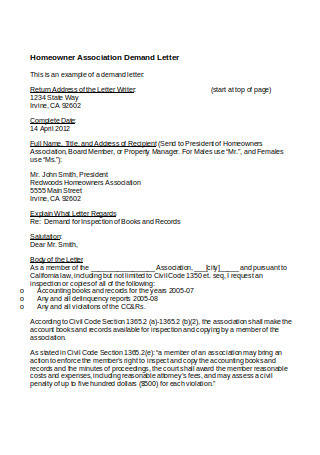
HomeOwner Association Demand Letter Format
download now
What is a Demand Letter?
A demand letter is a formal and standard communication issued by an attorney or a party seeking payment or resolution in various legal situations and one of the important business documents. It serves as a written demand for payment or compensation, adhering to established legal requirements. These letters are often utilized in personal injury cases, addressing insurance companies to seek appropriate recompense. They can also be directed towards landlords, articulating concerns and requesting necessary actions. Demand letters are important, even in small claims cases, because they succinctly and expertly state out complaints and legal duties. Their goal is to establish rights, start discussions, and open the door for eventual legal action if an amicable conclusion cannot be found.
These letters can be used by both professionals and private individuals to request remedies, negotiate agreements, and enforce legal rights. Demand letters can considerably boost the probability of earning money or getting a good result, according to industry research. In fact, studies have shown that companies using demand letters are able to recover close to 75% of unpaid bills without having to file a lawsuit. In the realm of law, lawyers rely on-demand letters to start proceedings and properly convey their clients’ expectations. A well-written demand letter may speed up claim settlements in industries like insurance; according to studies, 60% of cases are settled within 30 days of receiving a demand letter. Moreover, demand letters can be utilized by landlords to address tenant issues, resulting in prompt responses and resolutions.
Examples of Demand Letters
Here are a few examples of demand letters like debt demand letters to provide you with a better understanding of how they are structured and written. These sample letters cover various situations, including payment disputes, personal injury claims, landlord-tenant issues, and more.
How to Write a Demand Letter
Crafting a demand letter can be a powerful way to assert your rights and seek resolution in various situations. This section provides a step-by-step guide on how to effectively write a demand letter, ensuring that your message is clear, persuasive, and legally sound.
Step 1: Understand the Purpose and Requirements
Before writing a demand letter, familiarize yourself with the purpose and requirements. Determine if you need a demand letter for payment, to address insurance companies in personal injury cases, communicate with a landlord, or pursue a small claims matter. Research sample demand letters or consult with an attorney to understand the format, language, and legal requirements specific to your situation.
Step 2: Organize Relevant Information and Documentation
Collect all pertinent information and supporting documentation. This may include invoices, contracts, medical records, photographs, or any evidence relevant to your claim. Make sure your demand letter has factual and systematic facts and makes a strong argument for your request.
Step 3: Establish the Structure and Content of the Demand Letter
Start with a formal introduction, clearly stating your purpose and intent. Provide a concise overview of the situation, including relevant dates and details. Present your demands in a firm yet professional manner, referencing applicable laws or contractual obligations. Support your claims with factual evidence and examples. Clearly state the desired outcome, whether it’s payment, resolution, repairs, or any other specific request.
Step 4: Maintain a Polished and Professional Tone
Write the demand letter in a polished and professional tone. Remain objective and avoid emotional language. Be clear, concise, and assertive in conveying your demands and expectations. Clarity, accuracy, and grammar should all be checked during proofreading. To make sure your letter properly conveys your viewpoint and optimizes its effectiveness, think about getting legal counsel’s input or using example demand letters as a guide.
FAQs
The purpose of a demand letter is to formally assert a claim or request for action, often with the intent to resolve a dispute or seek compensation. It serves as a persuasive tool to communicate grievances, demands, and legal rights in a clear and concise manner. Demand letters aim to prompt a response from the recipient, whether it’s a payment, a settlement offer, a resolution to a problem, or a change in behavior. Demand letters offer a formal and authoritative method of resolving disputes and attaining desired results by detailing the particular concerns, providing proof or legal arguments, and establishing a reasonable timeframe.
Yes, it is possible to send a demand letter without a lawyer. While having legal representation can provide expertise and guidance, individuals can still draft and send a demand letter on their own. However, for complex legal matters or situations requiring specialized knowledge, consulting with a lawyer is recommended to ensure the letter is legally sound and maximizes its potential impact.
There is no set limit on the number of demand letters one can send. The number of demand letters sent depends on the specific circumstances and the desired outcome. In certain situations, multiple demand letters may be necessary to escalate the matter or address different aspects of a dispute.
Carefully review its contents to understand the claims being made and the requested resolution. Assess the validity of the claims and seek legal advice if necessary. Craft a written response that addresses the concerns raised, providing a clear and reasoned explanation of your position. Offer counterarguments, negotiate a settlement, or propose alternative solutions. Maintain professionalism, avoid emotional language, and consider seeking legal representation to ensure an appropriate response.
What is the purpose of a demand letter?
Can you send a demand letter without a lawyer?
How many demand letters can you send?
How to respond to a demand letter?
Demand letters offer numerous benefits and applications across diverse fields and industries. From seeking payment to addressing insurance companies, and landlords, or pursuing small claims, these letters provide a strategic and efficient means for professionals and individuals to protect their rights, settle disputes, and achieve desired outcomes in a variety of industries. Understanding the importance and benefits of demand letters, as well as the steps involved in writing one, empowers individuals and professionals. By exploring different examples and following the structured approach, one can effectively navigate legal disputes, negotiate settlements, and advocate for their interests, ensuring a harmonious symphony of justice and fair outcomes. Follow a format from our sample demand letters in PDF templates in Sample.net, as well as other letter samples that you can easily download and use such as sample contract termination letters and tenancy termination letters.
